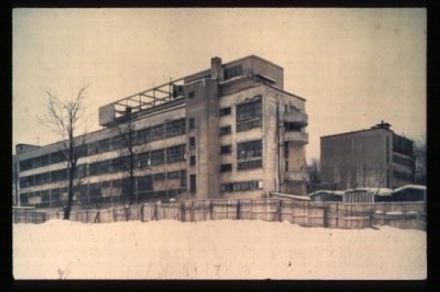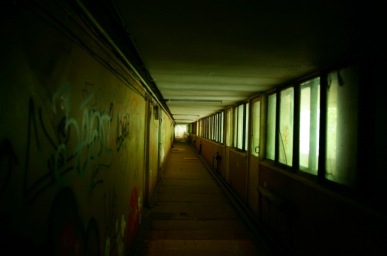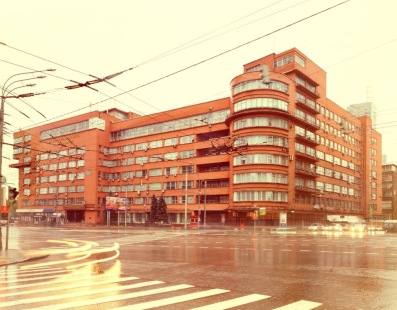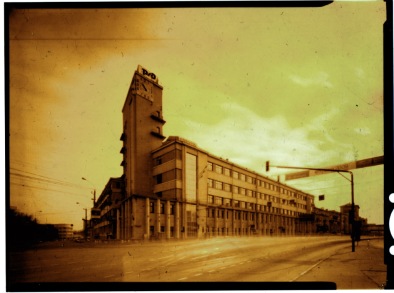no images were found
From Das Neue Rußland, vol. VIII-IX. Berlin, 1931:
City Planning in Evolution
If there is any one area of endeavor in the USSR where the Revolution is still in full motion, then city building and dwelling construction must be considered first. This is not surprising, for the replacement of a thousand-year-old social system by a new one is a process that will take more than just a dozen years to complete, or even to provide a clear and unequivocal direction. Moreover, since the thorough reorganization of the the entire social life of the USSR, which covers on sixth of the land area of our globe, will vitally affect city development and housing everywhere, it follows that within the context of this general process of change it is at the present moment impossible to offer a panacea that would suddenly cure all the many ills accumulated over centuries and bring about immediate mature results.
Nevertheless, a number of theories have been advanced and are in hard competition with each other. Some have been published abroad, and this in turn may have led to the impression that it is only these that represent the mainstream of Russian city planning. Nothing could be more misleading!
So far there has been no firm commitment to one or the other system of city planning, and by all indications no such commitment should be forthcoming in the near future. This does not mean that the field is dominated by a lack of planning or by arbitrariness. The basic precepts of modern city planning, which in the past years have found wide acceptance in Europe, and which are now being implemented, have become the A to Z of planning in the USSR as well. Clear separation of industry and residence, rational traffic design, the systematic organization of green areas, etc., are considered as valid a basis for healthy planning there as here; similarly, open-block planning is giving way to single-row building.
The Central Problem of the Socialist City
However, even though the general principles for the planning of Socialist cities have been established, the real problem is only beginning. In other words, a city structure will have to be developed that in terms of its entire genesis as well as in terms of its internal articulation and structuring will be fundamentally different from the capitalist cities [189] in the rest of the world. While our own cities in most cases owe their origin to commerce and the market place, with private ownership of land largely determining their form, the generating force behind the development of new cities in the Soviet Union is always and exclusively industrial economic production, regardless of whether in the form of industrial combines or agricultural collectives. In contrast to prevailing practice in Europe, and with particular reference to trends in the USA, building densities in Soviet cities are not influenced by artificially inflated land values, as often happens in our case, but solely by the laws of social hygiene and economy. In connection with this it should be pointed out most emphatically that the word ‘economy’ has taken on an entirely new meaning east of the Polish border. Investments, which in a local sense may appear to be unprofitable, become convincingly [190] viable when seen from the vantage point of over all national planning by the state.
At this point I should like to point out most emphatically that among the innumerable misjudgments made abroad, none is more incorrect than that which assumes that work in the field of city planning and housing in the USSR is done without rhyme or reason, and that the ground has been cut out from under their feet. The truth is that the economic and cultural reconstruction of all life in the USSR has no parallel in the history of mankind. It is equally true that this reconstruction is being accomplished by a sober evaluation of all the realities, and it should be obvious to any observer that in each successive stage, matters recognized as desirable and ideal are being consciously subordinated to matters that are feasible and possible within the limitations of the present. In the course of this discussion I shall return to this point on appropriate occasions.
The Overall Form of the Socialist City
As far as the general size of the city is concerned, the decision has been made to avoid in the future urban centers with populations larger than 150,000-200,000. Reference is made to Lenin, who said: “We must aim at the fusion of industry and agriculture, based on the rigorous application of science, combined with the utilization of collective labor, and by means of a more diffused settlement pattern for the people. We must end the loneliness, demoralization, and remoteness of the village, as well as the unnatural concentration of vast masses of people in the cities.”
Based on the above, the Five-Year Plan proposes decentralization of industrial production and thus automatically prevents the formation of excessive human concentrations. As mentioned earlier, opinions vary widely concerning the methods by which these new settlements should be implemented.
Street-Aligned Single-Story Buildings
A proposal has been advanced to construct single-story buildings on pylons à la Corbusier, placing them at certain intervals along both sides of roads leading to kolkhozy. The Soviets do not take this idea too seriously and tend to toy with it in the theoretical sense only. It has never been tried in practice, and indications are that the concept will never actually be realized; generally it must be considered exceedingly uneconomical, particularly in terms of over-all state economic planning. Continue reading




















































